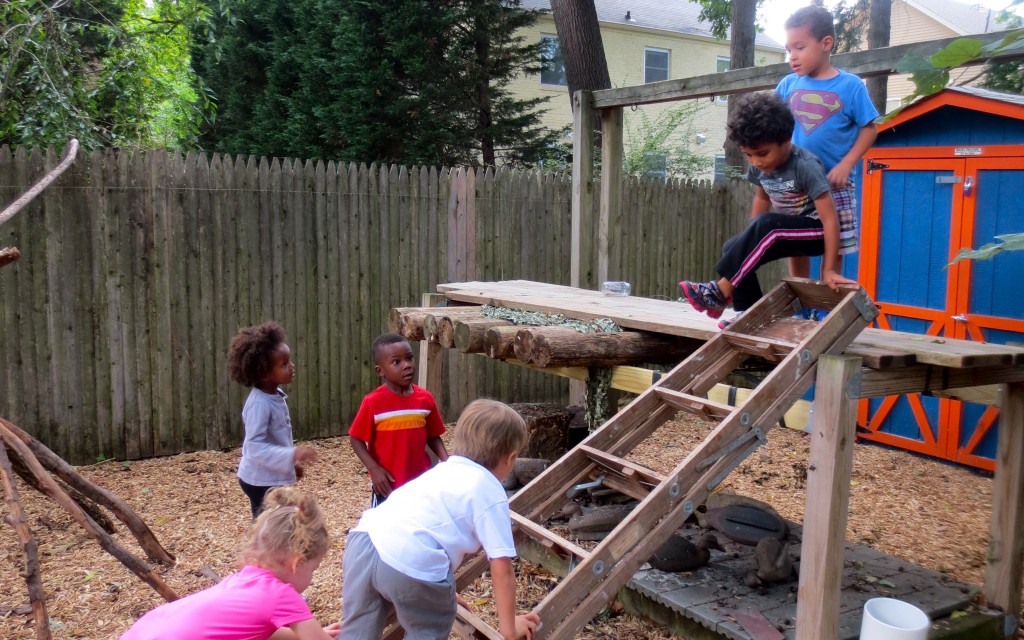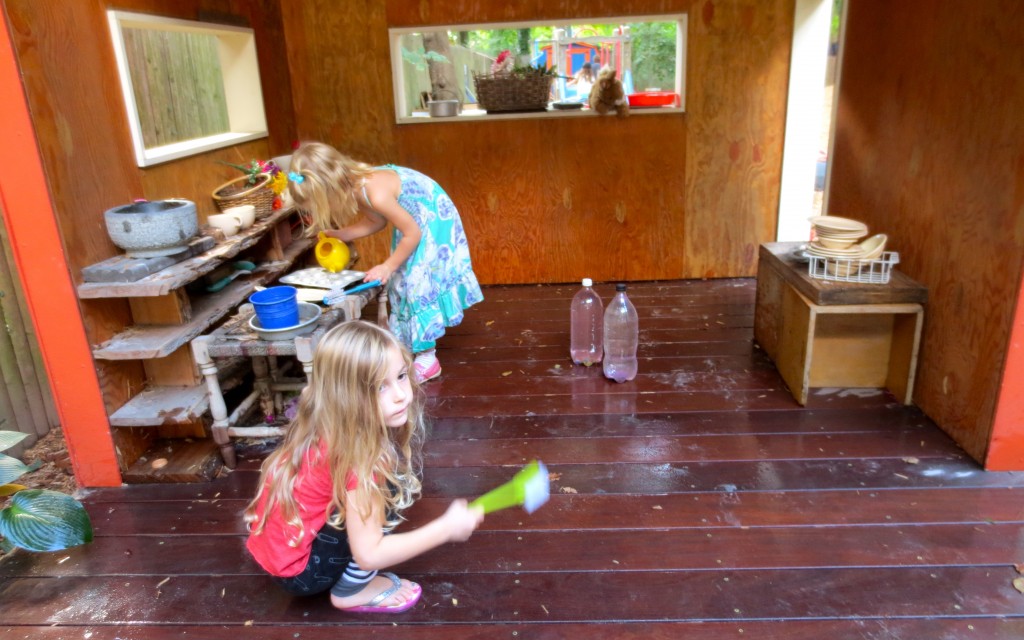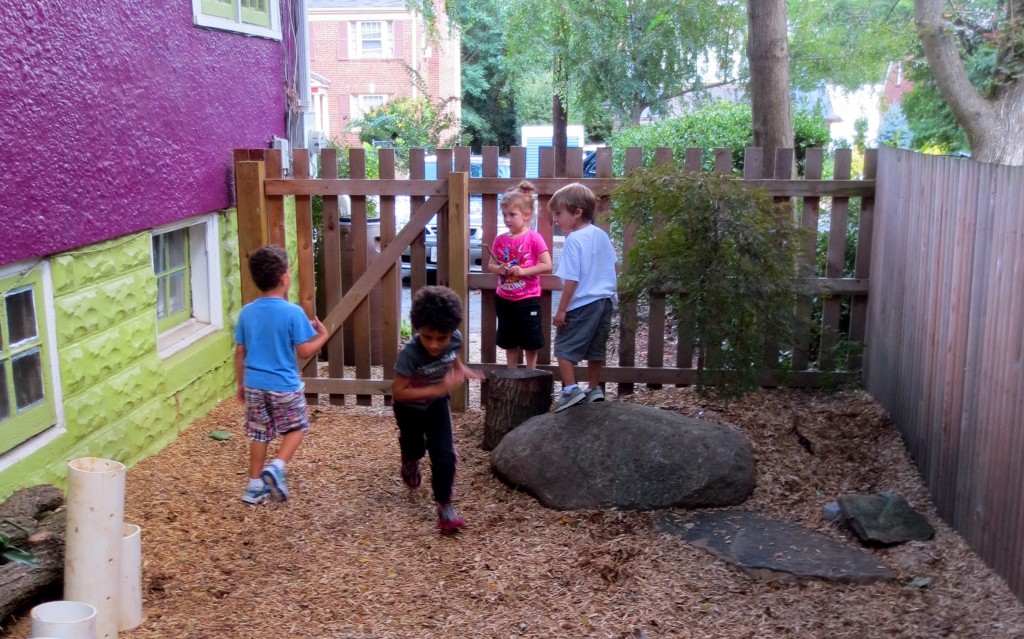Play Arcs
If you watch how children move around and through a play space, in singles, pairs, or groups, you will see that they move with purpose and direction. Their play scenarios form a total immersion-bubble around them. This is why I call play scenarios, "play arcs." I imagine the scenarios radiating around the children in circles that move with them. The circles overlapping with other circles, enveloping or bouncing off each other. I describe it like this in parent training materials...A play arc is basically the story line from a dramatic play scenario shaped by children, but it is so much more than just that. The play arc encompasses not just the story, but also the way the players interact with their imagined environment and the other children they encounter during their play.
In the beginning stages of developing play arcs, children can thoroughly inhabit an imagined environment, but they cannot really embrace the subtleties of either the individual involvement of others or how the presence of others participating a different, but intersecting play arc. They need time to play together in large groups to develop these skills. The social interaction and connections are part of what makes them truly ready for school. This is what we help grow. If adults misinterpret and then interrupt the interactions and connections that are formed by these overlapping arcs, then children are not able to practice and develop social play skills.
Recently, I documented a set of intersecting play arcs and these are pictured here. We have 18 children in our afternoon class. The children fan out across the playground and get right down to playing. In fact, many of the children begin planning what they will play outside right when they walk in the door at noon, shaping bits and pieces of it while they are still inside.
On this particular day, there were small and large play arcs. A few children were digging together in the sandpit. Another set was at the campsite organizing a party. A third was on our loose parts climbing structure pretending to be soldier-spies on a ship. And a fourth set was in the Teahouse cleaning and cooking up a storm. There were a couple of independent players, each finding little moments and pursuits to occupy their time. These were the little play arcs and were pretty stationary as they were site specific.
Then there were some play arcs that involved movement. Two children were playing "Come on, let's run!". The only rule was to run, back and forth, the whole length of the yard and another, larger group were playing superheroes.
These moving play arcs bounced in and out of the stationary play arcs causing all of them to ripple and shimmer which required the children to respond to each other -- exactly what we want to happen! The shimmering is accompanied -- at this point in their play development -- by sparks. Again, they inhabit their imaginary worlds so thoroughly that they do not notice the details of each other's play arcs and are not always able to fold in the play of others seamlessly, or on the other hand to disregard the intersection of other play arcs. The sparks fly out and around in comments like, "they won't let us play" or "they are being mean to us," which may set off alarm bells in an adult's ears, but the children are often just simply working through the electric buzz and shimmer of their play arcs intersecting.
Children need time and space to make the all-important connections for play. Adults need to take the time to watch the flow and the radiating and intersecting lines of the children's play arcs to establish how these may interact from moment to moment. Through observation, and with an understanding of how play skills develop over time, adults are able to carefully draw conclusions without overstepping. They can assist, when needed, in effective and specific conflict resolutions, without interrupting the natural flow of play.



